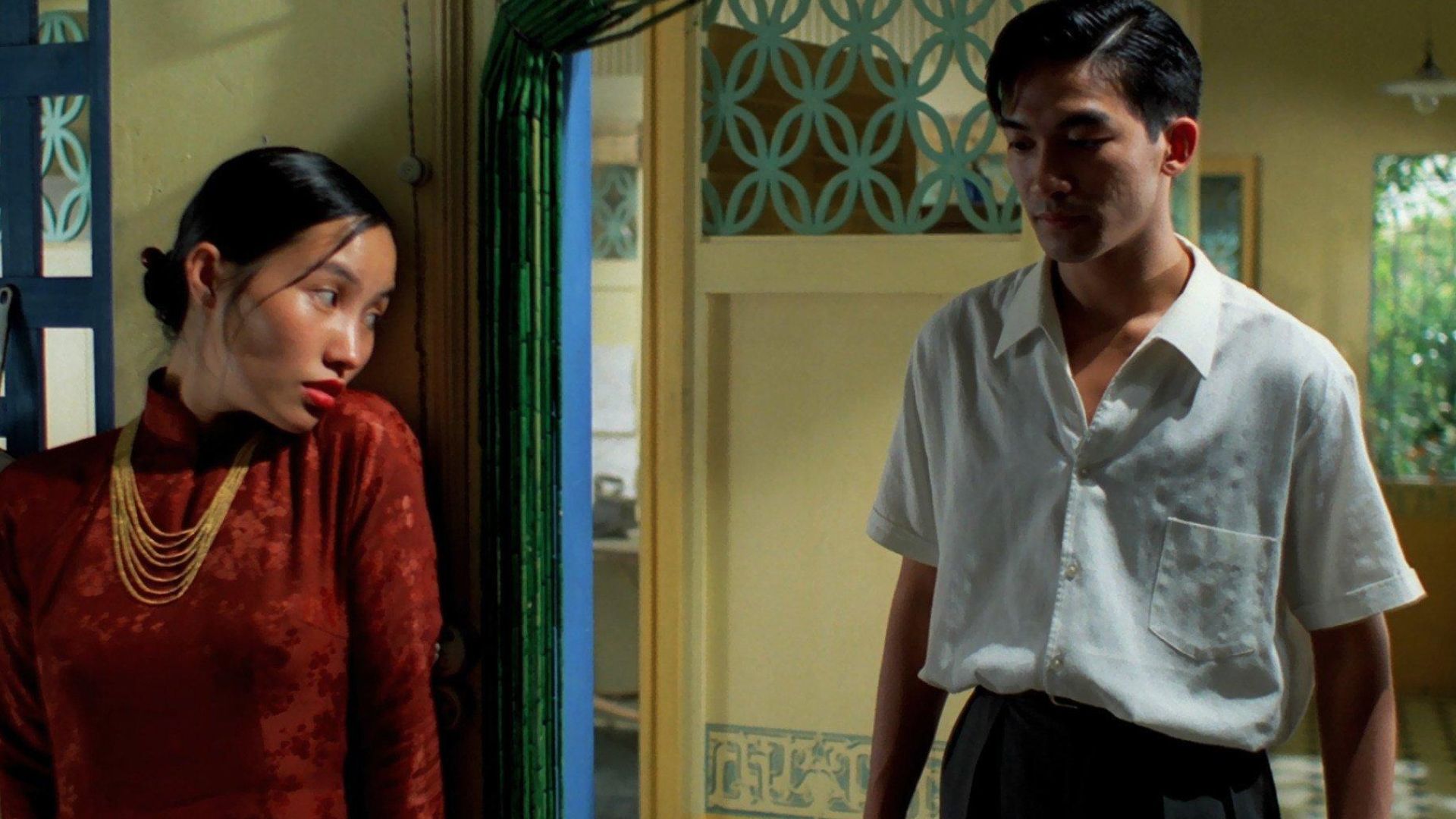
‘The Scent of Green Papaya’ Film Review

“The Scent of Green Papaya,” directed by Tran Anh Hung and released in 1993, is a cinematographic gem that explores the life and experiences of a young girl named Mui in 1950s and 1960s Saigon, Vietnam. The film is celebrated for its enchanting narrative rhythm, mesmerizing visuals, and the skillful depiction of the subtle nuances of everyday life. Despite its compelling simplicity, it has been a subject of robust discussion and debate, largely centered on the film’s representation of Vietnamese culture and history.
The narrative is a slow-paced, intimate exploration of Mui’s life, beginning with her arrival as a young girl to serve in a well-to-do Saigon household. The film is divided into two segments: the first half of the film focuses on Mui’s early years of learning and observation, while the latter part explores her transition into womanhood and the complicated feelings of love that accompany it. The film does not rely on grand, dramatic events or plot twists; instead, it provides a contemplative look into Mui’s experiences and the world as she perceives it.
The film’s acclaim rests heavily on its captivating cinematography and the intricate mise-en-scène present in every frame. Each shot is a meticulously composed visual masterpiece, from the intricate detailing of traditional Vietnamese meals being prepared, to the glistening beads of raindrops on a papaya leaf. It is Tran’s unique cinematic lens that creates an atmosphere of serene tranquility and beauty in the mundane.
However, “The Scent of Green Papaya” is not without its controversies. A significant critique of the film is its alleged ‘westernization’ of Vietnamese culture. Detractors argue that Tran’s Vietnam is an overly romanticized, sanitized version, conspicuously devoid of the political and socio-economic upheavals that marked the era. They contend that the film’s portrayal of Saigon — calm, picturesque, and untouched by the turbulence of the times — caters to Western audiences’ preconceived notions and romantic fantasies of the East.
This critique falls under the broader umbrella of Orientalism, a concept popularized by scholar Edward Said, which refers to the West’s tendency to construct an exotic, often simplified and romanticized image of the East, thereby asserting cultural and intellectual superiority. Critics argue that the film’s unhurried narrative pace, static cinematography, and pastoral images are attempts to portray Vietnam as an otherworldly, tranquil place, in stark contrast to the dynamic complexity of Western societies.
Despite these criticisms, it’s essential to consider Tran Anh Hung’s distinctive position as a Vietnamese-French filmmaker. His cross-cultural background would have inevitably shaped his approach to depicting Vietnamese culture, resulting in a film that seeks to bridge East and West. Furthermore, while the film does focus on the beauty of everyday life, it subtly underscores themes of class, gender inequality, and societal norms, thereby adding a layer of complexity to the seemingly idyllic narrative.
The film’s representation of women is particularly noteworthy. Mui’s character, a servant girl who eventually becomes a woman of the house, raises questions about class and gender dynamics in Vietnamese society. The quiet strength and resilience she displays challenge the stereotype of passive and submissive Asian women, adding depth to her character and the overall narrative.
In the realm of sound, “The Scent of Green Papaya” offers a harmonious blend of natural and traditional musical elements, further enhancing the film’s immersive viewing experience. The soothing sounds of nature, combined with traditional Vietnamese music, serve to transport the audience into the heart of Saigon, reinforcing the film’s sense of place and time.
“The Scent of Green Papaya” remains a landmark in Vietnamese cinema, and its significance transcends its international success and the prestigious Academy Award nomination for Best Foreign Language Film it received. The film is not just a masterclass in visual storytelling but also a vital cultural artifact that has sparked profound discourse on the portrayal of Vietnamese culture and history in cinema.
The film’s legacy lies in its capacity to invoke rich, layered discussions about cultural representation, the politics of filmmaking, and the responsibility of filmmakers in shaping global perceptions of their native cultures. Even as it draws criticism for its alleged Western gaze, it pushes viewers to engage more deeply with what they see on screen and question their own assumptions about cultural representation in film.
Despite the controversies, “The Scent of Green Papaya” remains an exceptionally crafted piece of cinema. Its tranquil narrative pace, the breathtaking cinematography, the thoughtful performances, and the masterful attention to detail make it a film that continues to captivate audiences. Mui’s story, although set in a specific time and culture, resonates on a universal level, touching on themes of love, class, and personal growth that transcend geographical and cultural boundaries, enduring as an essential piece of world cinema, a testament to the universal power of storytelling.